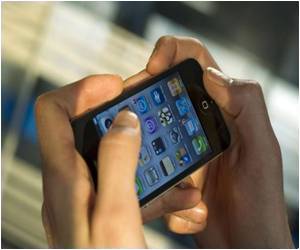A new system developed by Disney Research in Zurich can transmit text, games or other information to the smartphones to audience at public venues through only an audio signal.

"Using a tablet or smartphone to interact with content while watching a TV show or a football game at home has become second nature to many people," said Stefan Mangold, a senior research scientist at Disney Research, Zürich. "Our multi-channel acoustic data transmission system makes it possible to provide the same experience in virtually any location around the world."
Mangold and his collaborators, Roman Frigg and Thomas R. Gross of ETH Zürich, will discuss and demonstrate their system during the Mobile Workshop at SIGGRAPH 2013, the International Conference on Computer Graphics and Interactive Techniques, July 21-25 in Anaheim, Calif.
In this system, supplemental content is encoded within a movie soundtrack, music or other audio programming typical of a public venue. Groups of connected smartphones serve as a microphone network, receiving the encoded messages and sharing them with each other using their built-in Wi-Fi connections. One of the phones then decodes the messages and shares them with the rest of the network. The encoded messages are not noticeable to people and do not bother those who choose not to use a companion device. No additional loudspeakers are necessary and normal volumes can be maintained. Audience members can choose whether to connect their smartphones into the network.
It's not a fool-proof way to transmit data, Mangold acknowledged. "The farther away your smartphone is from the speakers, the more likely you are to lose the signal or get a jumbled message," he said. "But that's why we join all of the smartphones into a distributed network, so the data stream is shared by all of the phones, enabling errors to be identified and corrected. The great part is that the more smartphones are in use on the network, the better the quality of the data is for everyone."
With smartphones increasingly boasting fast graphics and signal processing units and reduced power consumption, this sort of cooperative resource sharing becomes more feasible and attractive, he noted, enabling such applications as mobile social games. Privacy and security concerns must be addressed, but the ability to create ad hoc smartphone networks promises to enable people to share their experiences immediately in a wide variety of venues.
Advertisement
Source-Eurekalert








